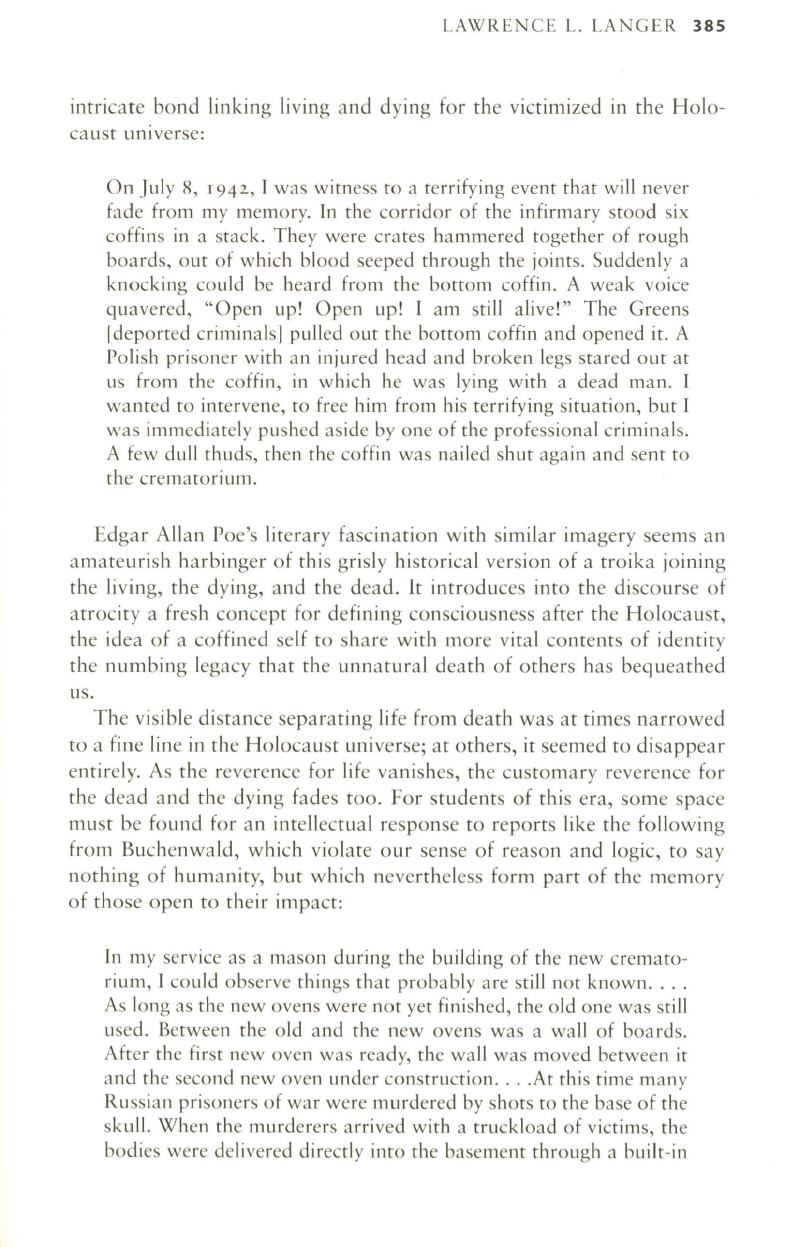
LAWRENCE
L.
LANGER
385
intricate bond linking living and dying for the victimized in the Holo–
caust universe:
On July 8,
1942,
I was witness to a terrifying event that will never
fade from my memory.
In
the corridor of the infirmary stood six
coffins in a stack. They were crates hammered together of rough
boards, out of which blood seeped through the joints. Suddenly a
knocking could be heard from the bottom coffin. A weak voice
quavered, "Open up! Open up!
I
am still alive!" The Greens
[deported criminalsl pulled out the bottom coffin and opened it. A
Polish prisoner with an injured head and broken legs stared out at
us from the coffin, in which he was lying with a dead man.
I
wanted to intervene, to free him from his terrifying situation, but
I
was immediately pushed aside by one of the professional criminals.
A few dull thuds, then the coffin was nailed shut again and sent to
the crematorium.
Edgar Allan Poe's literary fascination with similar imagery seems an
amateurish harbinger of this grisly historical version of a troika joining
the living, the dying, and the dead. It introduces into the discourse of
atrocity a fresh concept for defining consciousness after the Holocaust,
the idea of a coHined self to share with more vital contents of identity
the numbing legacy that the unnatural death of others has bequeathed
us.
The visible distance separating life from death was at times narrowed
to a fine line in the Holocaust universe; at others, it seemed to disappear
entirely. As the reverence for life vanishes, the customary reverence for
the dead and the dying fades too. For students of this era, some space
must be found for an intellectual response to reports like the following
from Buchenwald, which violate our sense of reason and logic, to say
nothing of humanity, but which nevertheless form part of the memory
of those open to their impact:
In my service as a mason during the building of the new cremato–
rium, I could observe things that probably are still not known....
As long as the new ovens were not yet finished, the old one was still
used. Between the old and the new ovens was a wall of boards.
After the first new oven was ready, the wall was moved between it
and the second new oven under construction ....At this time many
Russian prisoners of war were murdered by shots to the base of the
skull. When the murderers arrived with a truckload of victims, the
bodies were delivered directly into the basement through a built-in


